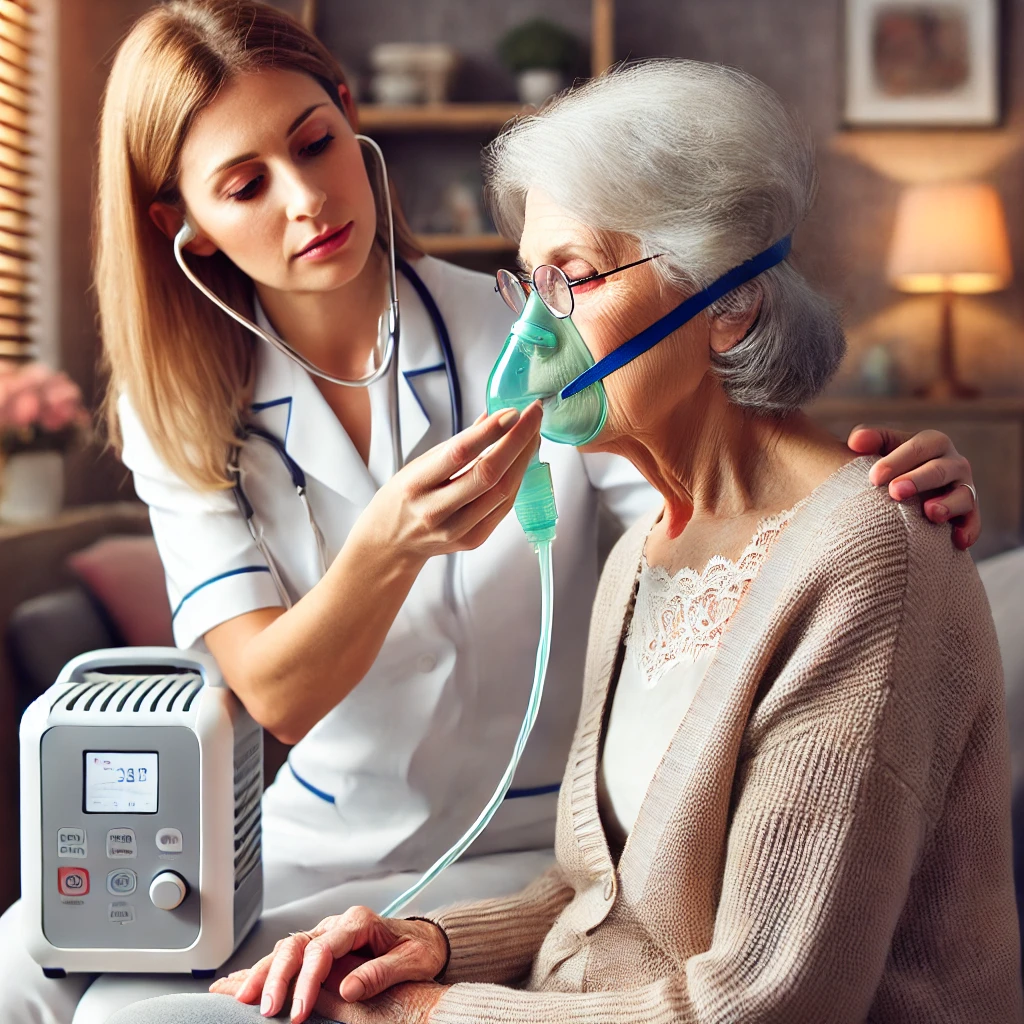Chronic Obstructive Pulmonary Disease (COPD) is a progressive lung condition that affects millions of people worldwide. Managing COPD involves lifestyle changes, medication, and in some cases, oxygen therapy. Many patients wonder, how many liters of oxygen for COPD is required for effective treatment. Understanding oxygen therapy and its benefits can help improve quality of life for those living with this condition.
What Is Oxygen Therapy for COPD?
Oxygen therapy is a medical treatment used to increase the amount of oxygen in the blood when lung function is compromised. People with COPD often struggle to get enough oxygen due to reduced lung capacity and airway inflammation. Supplemental oxygen can help relieve breathlessness, improve stamina, and enhance overall well-being.
This therapy can be administered through different devices, including oxygen concentrators, portable oxygen tanks, and liquid oxygen systems. Depending on the severity of COPD, patients may need oxygen continuously or only during specific activities, such as sleeping or exercising.
When Is Oxygen Therapy Necessary?
Doctors prescribe oxygen therapy when blood oxygen levels drop too low. This is determined through tests like arterial blood gas analysis and pulse oximetry. Generally, oxygen therapy is recommended when:
- Blood oxygen levels fall below 55 mmHg
- Oxygen saturation levels drop below 88%
- Patients experience severe breathlessness even with medications
- There are signs of organ strain due to low oxygen levels
It is important for patients to follow their prescribed oxygen levels to avoid complications. Using too much or too little oxygen can have negative effects on health.
How Does Oxygen Therapy Benefit COPD Patients?
Oxygen therapy is not a cure for COPD, but it offers several benefits:
- Reduces shortness of breath and improves comfort
- Increases stamina and reduces fatigue during daily activities
- Supports better sleep quality by preventing oxygen drops at night
- Lowers the risk of heart complications associated with low oxygen levels
- Enhances overall mental clarity and reduces anxiety related to breathlessness
Determining Oxygen Flow Rate for COPD
One of the most common concerns is how many liters of oxygen for COPD patients should be used. The appropriate oxygen flow rate depends on the severity of the condition and a doctor’s recommendation. Generally, COPD patients require:
- 1 to 2 liters per minute (LPM) for mild to moderate COPD
- 2 to 4 LPM for more advanced stages
- Higher flow rates (4+ LPM) in severe cases, often requiring specialized high-flow devices
Using oxygen without medical supervision can lead to complications, such as carbon dioxide retention. Patients should always follow their doctor’s prescribed oxygen levels.
Types of Oxygen Delivery Systems
Oxygen therapy can be administered through different devices, depending on a patient’s lifestyle and oxygen needs.
Nasal Cannula
A nasal cannula is a small, lightweight device with prongs that fit into the nostrils. It is commonly used for low-flow oxygen delivery, making it ideal for patients who need oxygen throughout the day.
Oxygen Mask
An oxygen mask covers both the nose and mouth and is used when higher flow rates are required. It delivers oxygen more efficiently during sleep or periods of severe breathlessness.
Portable Oxygen Concentrators
Portable oxygen concentrators are lightweight, battery-operated devices that extract oxygen from the air. They allow COPD patients to maintain mobility while receiving supplemental oxygen.
Liquid Oxygen Systems
These systems store oxygen in liquid form, offering a more concentrated supply. They are useful for patients requiring higher flow rates over extended periods.
Safety Tips for Oxygen Therapy
While oxygen therapy is beneficial, it must be used safely to prevent accidents or health risks.
- Avoid smoking or open flames near oxygen equipment
- Ensure proper ventilation to reduce fire hazards
- Regularly clean oxygen devices to prevent bacterial buildup
- Use only the prescribed flow rate to avoid complications
- Carry a backup oxygen supply when traveling
When to Contact a Pulmonary Specialist
Oxygen therapy should always be managed by a healthcare provider. If you or a loved one has COPD and struggles with breathlessness, a pulmonary specialist can assess oxygen needs and recommend the right treatment plan.
To learn more about oxygen therapy and COPD management, visit Interstate Pulmonary for expert guidance. If you need professional consultation, contact their team today.
Final Thoughts on Oxygen Therapy for COPD
Oxygen therapy plays a crucial role in improving the lives of COPD patients by reducing symptoms and enhancing overall well-being. Understanding when to use oxygen, how it benefits the body, and what safety precautions to take can help patients manage their condition effectively. Always consult a healthcare provider before making any changes to oxygen therapy to ensure the best possible outcome.
For comprehensive pulmonary care and expert advice, explore the resources available at Interstate Pulmonary.
